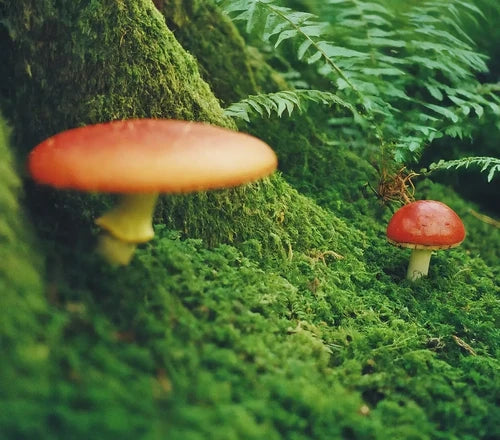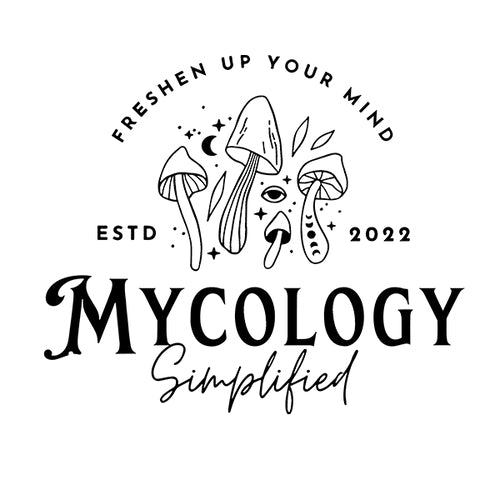
Exploring the Fascinating World of Mycology: Tools and Tips for Beginners
Compartir
Dive deep into the earthy, unexplored corners of our world with the study of mycology—the science of fungi. From the lush forest floors to the corners of your backyard, these organisms play a pivotal role in our ecosystem. This guide is your first step towards uncovering the mysteries and marvels of fungi, equipped with the right tools and knowledge to start your own mycological journey.

What is Mycology: The Study of Fungi
Mycology, the biological study and exploration of fungi, extends far beyond what meets the eye. Fungi, an integral component of the earth’s ecosystem, are not only fascinating for their diverse forms and colors but also for their crucial role in nutrient cycling and as symbiotic partners of plants. The world of mycology opens up a realm where these seemingly obscure organisms provide profound insights into biodiversity, medicine, and environmental science.
This scientific discipline uncovers the mystery behind the ecological significance of fungi, including their ability to decompose organic matter, and their relationship with other living organisms. Mycology not only deepens our understanding of the natural world but also offers potential solutions to pressing issues like waste management and the development of new pharmaceuticals.
Getting Started: Basic Mycology Tools for Beginners
Embarking on the study of mycology requires an arsenal of essential tools to effectively collect, examine, and catalog fungi. A reliable field guide is indispensable, providing detailed information on identifying various species. Alongside, a sturdy knife or scalpel is crucial for collecting samples. Additionally, having a magnifying glass or hand lens at your disposal will aid in observing the finer details of specimens crucial for accurate identification.
Mycologists often equip themselves with notebooks or digital apps to record observations and environmental conditions, enhancing their fieldwork data. Containers or waxed paper bags are necessary for safely transporting collected fungi without damaging delicate structures or contaminating samples.

The Importance of Identifying Different Fungi
Identifying different fungi is a foundational aspect of mycology, crucial for understanding their role within ecosystems and potential benefits or hazards. Accurate identification allows mycologists to differentiate between edible, medicinal, and potentially toxic species. It forms the basis for ecological research, conservation efforts, and the cultivation of beneficial fungi for culinary or medicinal purposes.
The skill of identifying fungi also enhances outdoor experiences, allowing enthusiasts to safely explore the fungal kingdom. It lays the groundwork for scientific contributions and community engagement through citizen science projects and educational outreach.
Collecting and Preserving Specimens: Best Practices
The practice of collecting and preserving fungi is crucial for study and future reference. Collecting should be done responsibly, with minimal impact on natural habitats, ensuring that enough specimens remain for continued growth and reproduction. When preserving, specimens should be dried using a dehydrator or air-drying methods to prevent decay, and then stored in a manner that protects them from physical damage and deterioration. Proper labeling with information such as collection date, location, and habitat is essential for accurate identification and research purposes. Additionally, it is important to periodically check stored specimens for any signs of mold or pests to maintain their quality.
Proper labeling and documentation of specimens, including date, location, and environmental conditions, are essential for meaningful scientific research. This careful preservation contributes to the long-term study of fungal diversity and ecological relationships. Researchers can track changes over time, analyze patterns in species distribution, and better understand the impact of environmental factors. Accurate records also facilitate reproducibility and collaboration within the scientific community. Ultimately, meticulous specimen documentation ensures the integrity and credibility of scientific research efforts.

Cultivating Fungi at Home: A Beginner’s Guide
Cultivating fungi at home can be a rewarding venture for mycology enthusiasts. Starting with easier species, such as oyster mushrooms, provides a practical introduction to the fundamentals of fungal cultivation. Creating a conducive environment for growth, including proper substrate, humidity, and temperature, is essential for success. For those looking to dive deeper into the world of mycology, experimenting with more complex species like shiitake or lion’s mane can offer a new level of challenge and expertise. Researching different cultivation techniques and understanding the unique requirements of each species can lead to a diverse and fulfilling fungi-growing experience. Remember, patience and attention to detail are key when embarking on this fungal journey.
This hands-on experience not only offers a sustainable source of gourmet mushrooms but also serves as an educational tool, providing insights into the complex life cycles and needs of fungi. Home cultivation encourages a deeper connection to the foods we eat and promotes a greater appreciation for the natural world. By actively participating in the cultivation process, individuals can witness firsthand the fascinating transformation from spore to fruiting body, fostering a sense of wonder and curiosity about the intricate workings of nature.
Mycology in the Digital Age: Resources and Communities
The digital age has revolutionized the field of mycology, providing unparalleled access to resources, communities, and databases. Online platforms facilitate global collaboration among mycologists, citizen scientists, and enthusiasts. Websites and mobile apps offer tools for identification, cataloging, and sharing observations, fostering a broader understanding and appreciation of fungi.

Sustainability and Ethics in Mycology Practice
Sustainability and ethics play crucial roles in the practice of mycology. Responsible collecting, mindful of conserving biodiversity and preventing habitat destruction, is paramount. Mycologists and hobbyists alike are encouraged to adhere to ethical guidelines, respecting private property and protected areas, and ensuring that their activities do not negatively impact fungal populations or their environments. This ethos extends to the sharing of knowledge and resources within the mycological community, promoting collaboration and environmental stewardship to ensure the long-term health and vitality of fungi ecosystems.

Embarking on a Mycological Journey
As you conclude your initial foray into the world of mycology, remember that the study of fungi is not just an academic pursuit but a doorway to understanding the intricacies of our natural world. Whether it’s in the quiet of the forest, observing the delicate framework of a mushroom, or in the buzz of online communities sharing their latest finds, mycology offers endless opportunities for discovery, conservation, and connection. Embrace this journey with curiosity and respect, and see where the spores of knowledge lead you.
Exploring the world of fungi can also deepen your appreciation for the role these organisms play in ecosystems, from decomposition to symbiotic relationships with plants. By continuing to learn about mycology, you’ll uncover the fascinating interactions that shape the environments we inhabit. Stay curious, stay observant, and let the wonder of mycology continue to inspire your exploration of the natural world.
